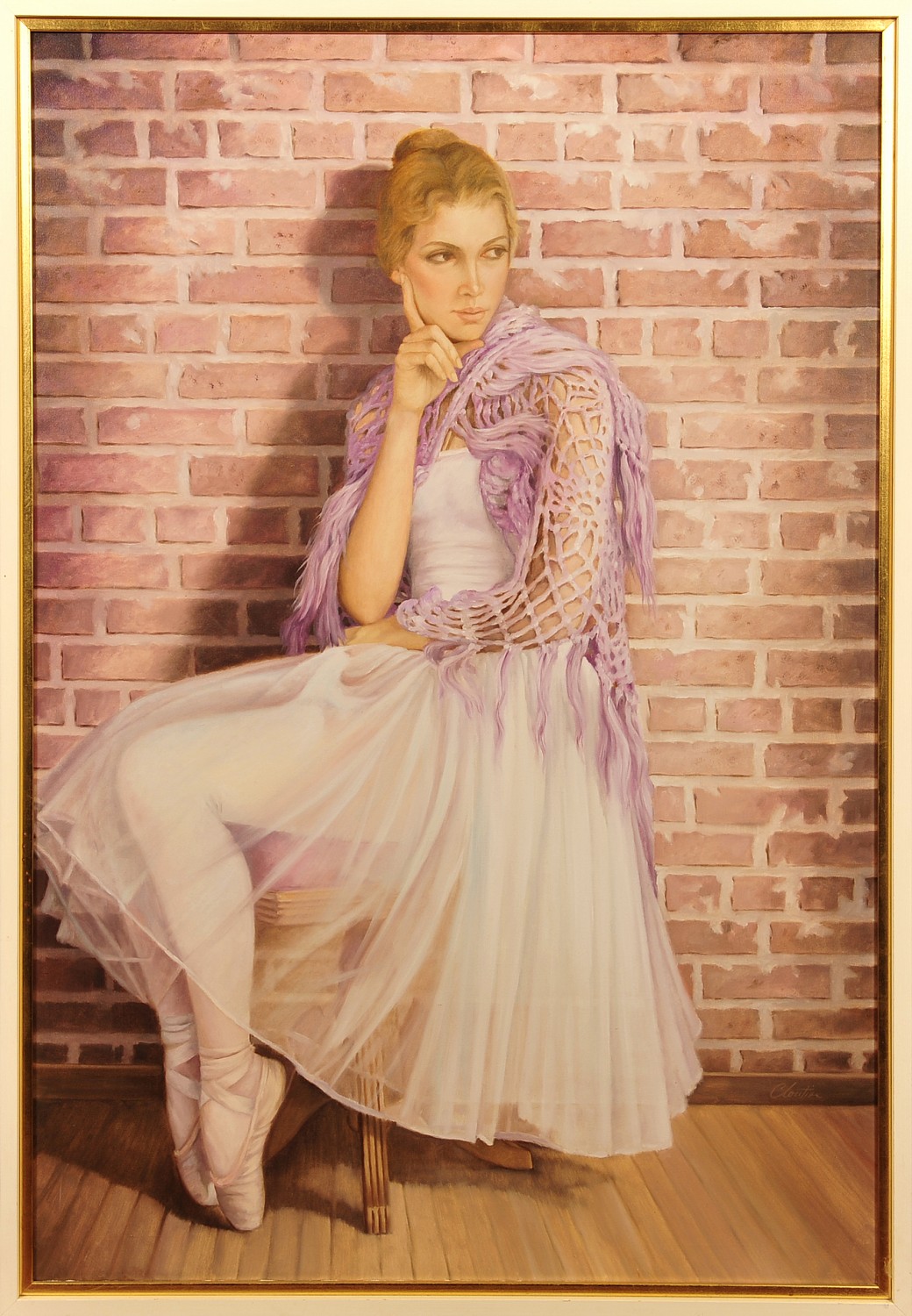"Intermission" Lot no. 392
By Francois Cloutier (French- b. 1927)
48.00" x 30.00"
Oil on Canvas
Signed Lower Left
REQUEST PRICE
PURCHASE REQUEST

Image of ballerina in front of a brick wall.
Explore related art collections: Portraits / Women as Subjects / Dance / $5,000 - $20,000
See all original artwork by Francois Cloutier
ABOUT THE ARTIST
Artist Francois Cloutier captures the essence of ballet in paintings of dancers who maintain their onstage poise and grace even in moments of backstage relaxation.
Francois Cloutier portrays dancers in his oil paintings - but not onstage, in theatrical lighting doing arabesques and grand jetés. Instead, he shows them in moments of offstage quiet; in precious rests during rehearsals or classes, alone, lost in thought.
This is an unusual approach. After all, ballet is an almost otherworldly blend of music and movement - a thrilling inspiration for any artist.
Then why would a painter turn away from this glory to concentrate on unplanned, sometimes tired - or even discouraged - back stage moments? And why are these paintings so compelling that they are snapped up by some of the most discriminating collectors in the Americas and abroad?
Cloutier's dancers have an immediate and undeniable presence and charm. But there is more; something tantalizing and intangible and compelling.
A professor of art from a nearby university recently studied Cloutier's work and described it this way: "His figures blend two eminently human traits. They show their individuality at the same time that they show their commitment to an ideal of beauty that transcends their individual, personal feelings."
Cloutier puts this complex idea into Visual form simply, with subtlety and grace. His dancers show their feelings, but with movements which are part of the physical discipline which has become instinctive. Their gestures and poses, even in relaxed, unguarded moments, reveal their discipline.
It is clear that Cloutier has a mature and sensitive insight into the nature of ballet. One is tempted to ask about his background in dance, - with whom has he studied?
But Cloutier has never had a formal ballet lesson. He adds a bit ruefully that he isn't even a very good ballroom dancer. At this, his wife Marilyn smiles quietly and almost imperceptibly shakes her head. On the contrary, she responds; he is quite good at ballroom dancing.
Marilyn knows whereof she speaks. She is a dancer and choreographer with an impressive resume of her own. She recognizes qualities of rhythm and coordination in her husband. They are so natural to him that he doesn't give them much thought.